Tag Archive: boundaries
March 6, 2019
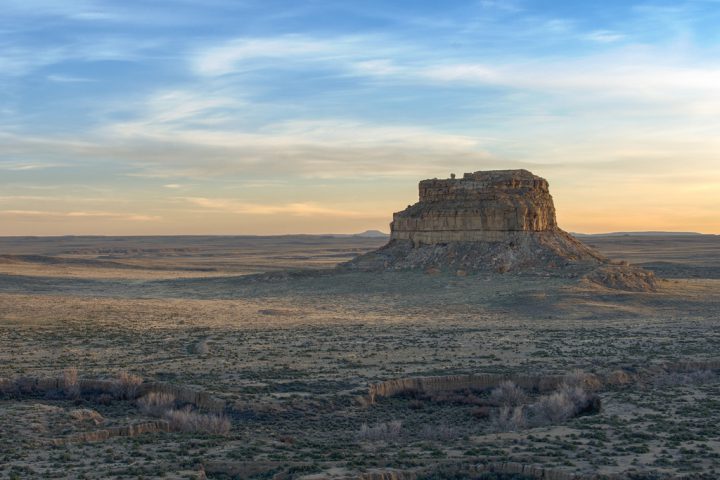
Image by Adam Meek, shared under provision of Creative Commons Attribution license 2.0.
Two pieces of art have been working me over lately. And I have been sharing them with others in different social justice spaces. One is a poem by Simon J. Ortiz, “Culture and the Universe,” shared with me by Mariana Velez Laris of The Nature Conservancy’s Indigenous Peoples and Local Communities Network. The second is the book Race and the Cosmos by Barbara A. Holmes, that I know through the good people at the Center for Action and Contemplation. Both works invite the reader to stretch and open in different ways for the sake of change and … evolution.
Here is Ortiz’s poem:
Two nights ago
in the canyon darkness,
only the half-moon and stars,
only mere men.
Prayer, faith, love,
existence.
We are measured
by vastness beyond ourselves.
Dark is light.
Stone is rising.
I don’t know
if humankind understands
culture: the act
of being human
is not easy knowledge.
With painted wooden sticks
and feathers, we journey
into the canyon toward stone,
a massive presence
in midwinter.
We stop.
Lean into me.
The universe
sings in quiet meditation.
We are wordless:
I am in you.
Without knowing why
culture needs our knowledge,
we are one self in the canyon.
And the stone wall
I lean upon spins me
wordless and silent
to the reach of stars
and to the heavens within.
It’s not humankind after all
nor is it culture
that limits us.
It is the vastness
we do not enter.
It is the stars
we do not let own us.
Very recently I brought this poem to a group of community organizers from a state-wide political action network, and after hearing it, many said they were really touched by this notion of there being a vastness they do not enter, and are therefore limited by. References were made to systems of oppression, to antagonism, to fear and lack of love. There is so much more to this world and by extension to ourselves that we do not tap into that keeps us repeating patterns of behavior and systems that do not serve our fuller humanity.
“We use language not so much to convey factual information as to construct worlds.”
– Barbara A. Holmes

Image by NASA Goddard, shared under provisions of Creative Commons Attribution license 2.0.
Holmes’ book extends this same theme of vastness, drawing from the fields of quantum physics, cosmology and ethics as a way of inviting a broader perspective and creating new language and thinking that points in the direction of a world where everyone belongs. She writes, for example, about “dark matter” and “dark energy,” which is pervasive and cohesive in the universe, the essentially creative energy that holds things together. Considering this profound and primordial force, Holmes says, we can only wonder at and celebrate “darkness,” not fear or denigrate it.
Holmes also invites us to consider that physics and cosmology point to the fundamental nature of reality as existing in relationship and interdependence and that systems of oppression go against the grain of the unfolding cosmos. She writes, “Our desire for justice is deeply rooted in systems that are holistic and relational. We have not forced, created, or dreamed this shared destiny; it seems to be the way of the universe.”
In times of breakdown and cynicism, both Ortiz and Holmes tell us that creativity and hope are to be found by looking more deeply into nature and more widely into the heavens to re-member who we are and that there are so many more possibilities than what we have created and perpetuate.
What vastness have you not yet entered, what wonders in our world and beyond have you not allowed to grab hold of you that might liberate and generate new possibilities in your change agency?
February 19, 2019
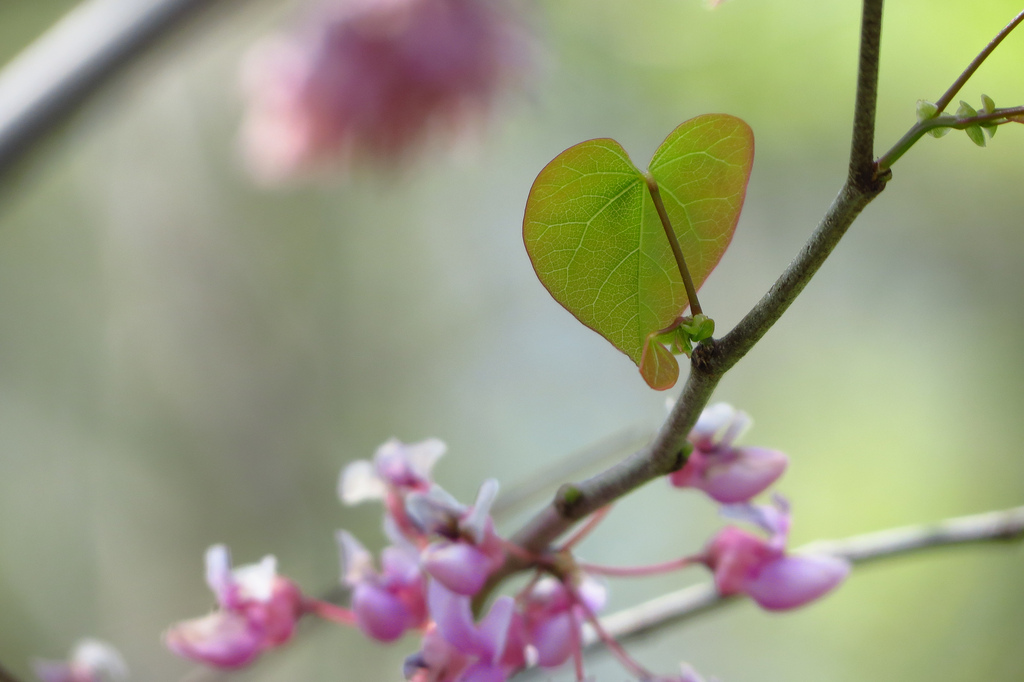
Photo by tracydekalb, “Redbud Love,” shared under provisions of Creative Commons Attribution license 2.0.
The following post was originally published in 2014, and has been edited. In many ways it feels even more relevant five years later …
Over the past dozen years or so at IISC (our half-life as an organization, and my whole life as a member of this amazing community), we have seen and experienced some interesting progressions. In our Facilitative Leadership for Social Change trainings and consulting work, we talk about the “interior condition” of effective collaborative and network leadership. When I first joined the organization, we used to say that collaborative leaders and change agents embraced an ethic of “service, authenticity and respect.” Then we made the move of changing “respect,” which came across to some as a bit weak, to LOVE. For the first couple of years after making this switch, when we asked “What’s love got to do with it?” with respect to effective leadership and work for social change, there were definitely some uncomfortable silences. Some participants would ultimately want to rename love as “respect” or “passion.”
Then in 2009 we started noticing a change. More heads nodded in rooms when we mentioned the “L-word,” less nervous laughter and shifting in seats. In one particularly striking instance, during a training with health care and public health professionals, a senior and very respected physician responded,
“What’s love got to do with it? Everything! Beyond my technical skills, I am effective in so far as I am able to really see my patients, students, and colleagues, to make them feel seen for who they are.”
Read More
April 21, 2016
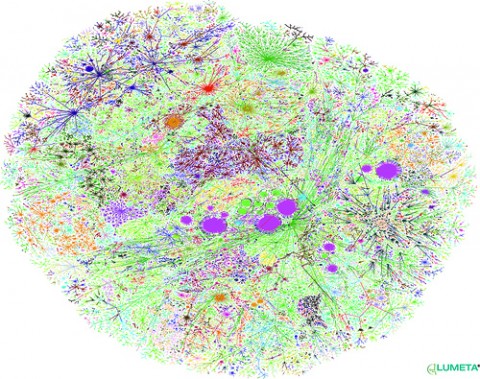
Image by Steve Jurvetson
Much of the work we do at IISC includes some element of helping to develop networks for social change. This entails working with diverse groups of individuals and/or organizations to come together and create a common vision and clear pathway to collective action and impact. I’ve been reflecting on how important it can be to not simply focus on creating or developing networks “out there” and across traditional boundaries, but also “in here,” within different recognized borders.
“When a living system is suffering from ill health, the remedy is found by connecting with more of itself.”
– Francisco Varela
The notion that part of the process of healing living systems entails connecting them to more of themselves is derived, in part, from the work of Francisco Varela, the Chilean biologist, philosopher and neuroscientist. As Varela and others have surmised, living systems are networks, including individual people, groups, organizations, and larger social systems. Furthermore, they have noted that when a living system is faltering, the solution will likely be discovered from within it if more and better connections are created. In other words, as Margaret Wheatley puts it,
“A failing system [or network] needs to start talking to itself, especially to those it didn’t know were even part of itself.”
I find it interesting in the context of social change work to consider how the process of re-connecting at and within different systemic levels can be beneficial to those levels and initiatives as wholes.
Read More
September 4, 2015
“Innovation is as much a function of the right kind of relationships as it is of a particular kind of individual vision.”
-Carter Phipps
 I generally cap off the summer with a post about some of my summer reading. I am still working on something to capture take-aways from one of my favorite reads – The New Science of Sustainability: Building a Foundation for Great Change – and am offering here a revised post from a few years back that focuses on a still very timely book.
I generally cap off the summer with a post about some of my summer reading. I am still working on something to capture take-aways from one of my favorite reads – The New Science of Sustainability: Building a Foundation for Great Change – and am offering here a revised post from a few years back that focuses on a still very timely book.
I ended my summer reading with what was for me a fascinating book – Evolutionaries by Carter Phipps. Phipps is the editor of EnlighteNext magazine and enthusiastic about what we calls “the evolutionary worldview” and how it is showing up in many different fields, from biology to sociology to philosophy and theology. He sees this perspective as transforming understandings of just about everything. Evolutionaries does a great service by deepening and broadening as well as bringing much more nuance to what I see as a very important perspective for the work of social change. Read More
February 12, 2015
“You have to remember, every boundary is a useful bit of fiction.”
– Buckminster Fuller
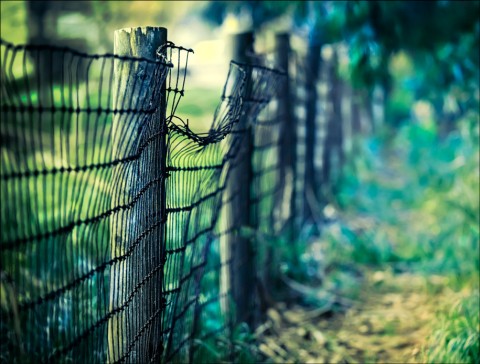
One of the more memorable stories about my late father, who passed away 3 years ago this month, happened not long after the Great Recession began in 2008. At the time, he was on the board of a national organization devoted to the study and promotion of human consciousness and the connection between science and spirituality. During a phone meeting of board members, people got to talking about the economic crisis, at which point one member made the following remark: “It’s at times like these that it’s especially important to remember that we are all one.”
“Bullshit!” was my dad’s response (not prone to such outbursts on that board or in general).
After a momentary and no doubt stunned silence, he elaborated – “Clearly we are not one. Some people, a very few people, are making out like bandits from this crisis. Meanwhile of the so-called 99%, some have been much harder hit than others, their wealth decimated. How can we say we are one at a time like this?”
To be fair to my father and full in the storytelling, my dad acknowledged that he believed that it is important to recognize interdependence and shared humanity, and that how and when to do this is an important consideration. Which brings me to the quote from Buckminster Fuller above, a personal favorite and one that I seem to keep sharing recently. Fuller, the eminent systems theorist and design scientist, understood the interconnected nature of reality, as well as the human need and tendency to draw boundaries. Theoretically these boundaries are drawn to be of use to something and/or someone – to name important distinctions, focus attention, aid with analysis, etc. In fact boundaries, or at least difference, might be said to be crucial to life, as dynamic exchange is required to keep living systems alive. Yes, boundaries can be very useful . . . except when they’re not. Read More
December 10, 2014
“What’s most systemic is personal . . . and interpersonal.”
– rift on a Peter Senge quote

At IISC, one of the three core lenses that we bring to our collaborative capacity building for social change work is love as a force for social transformation. How this lens impacts what we do as practitioners depends on context, though often it comes down to ensuring that there is time for people in the collaborative change efforts we support to connect on a personal and interpersonal level. One way to do this is to invite people to share stories and do this beyond the parameters for their professionally defined roles. I did this recently with a group and as is often the case, there were a few areas of resistance in the collective body. “Why are we doing this?” asked someone with a hint of consternation. That became my opening. Here is what I offer as a response to discomfort around what some people call “touchy feely” exercises.
Why are we doing this?
- In general terms, to expand collective potential.
- To help each of us to be more fully seen and appreciated for who we are, beyond abstractions and implicit assumptions. When people do not feel seen or appreciated they can disengage, or “act out” to get the attention they want.
- To deepen connection, build trust and increase social velocity.
- To test and stretch the boundaries of “appropriate” and “legitimate” ways of knowing and being with one another. Otherwise people can default to ways that privilege those most comfortable with certain ways of being (often strictly professional and cerebral).
- To grow “positivity” – that is, to expand the overall collectively felt sense of positive emotions (which includes pride related to the demonstrated ability to have and hold difficult conversations). Positivity has been scientifically linked with greater physical and psychological capacity to see and take in more (of systems and one another).
I offer these, like a yoga teacher, with compassion for any expressed discomfort or tightness felt in different parts of the collective body. And the invitation is to breathe through this and to see what might be loosened up for the benefit of the whole. For another take on this, I highly recommend my friend Joe Hsueh’s piece “Why the Human Touch is Key to Unlocking Systems Change.”
Curious to hear your own experiences connecting what is most personal and interpersonal with systemic change.
July 8, 2014
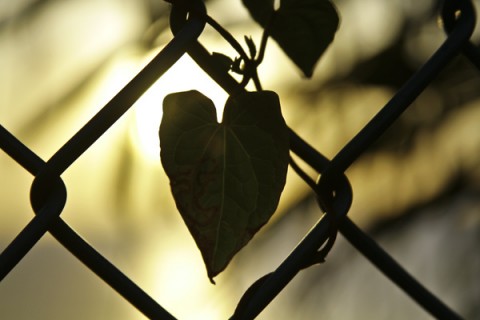
Photo by Leland Francisco
Over the past 8 years at IISC I have seen and experienced some interesting progressions. When I first joined the organization, in our Facilitative Leadership trainings, we talked about the “interior condition” of effective collaborative leaders. At the core we mentioned that these leaders and change agents embraced an ethic of “service, authenticity and respect.” Then we made the bold move of changing “respect,” which came across to many as a bit weak, to LOVE. For the first couple of years after making this switch, when I asked “What’s love got to do with it?” with respect to effective leadership and work for social change, there were often uncomfortable silences. Some participants would ultimately want to reframe love as “respect” or “passion.”
Then in 2009 I started noticing a change. More heads nodded in rooms when I mentioned the “L-word.” Less nervous laughter and shifting in seats. In one particularly striking instance, during a training with health care professionals in Maine, a senior and very respected physician responded,
“What’s love got to do with it? Everything! Beyond my technical skills, I am effective in so far as I am able to really see my patients, students, and colleagues, to make them feel seen for who they are.”
Read More
June 18, 2014
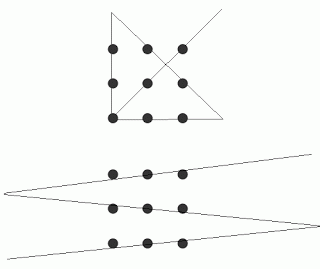
You probably know this challenge. Start with 3 rows of 3 dots in the form of a square. Now using only three or four straight lines, connect all of the dots without lifting your pen or pencil from the paper (see answers above). I was reminded of this exercise by some of the participants in the Tillotson Fund Community Practitioners Network (CPN). They used it as a metaphor during a presentation about a multi-functional collaborative platform they are proposing to connect a rather vast and disparate region of New Hampshire’s northern most county, including parts of western Vermont, southern Quebec, and eastern Maine. The vision for the platform is that it would help to build connectivity and alignment around a core set of regional values that would also inspire action for community and economic development. Read More
November 20, 2013
“The major problems of the world are the result of the difference between the way nature works and the way people think.”
— Gregory Bateson

|Photo by amazon2008|http://www.flickr.com/photos/21654792@N03/3745280688/in/photolist-6GXxsY-6HCRqv-6L93Kt-6LFLKG-6MN2EA-6MZAwG-6NmnMj-6R9T78-6UuYYo-6VM6LM-6Wp5Qp-6ZcWpt-6ZHMrr-77FoRY-791JEy-79bwHB-7ax4Yo-7by5uN-7eRtnf-7jDnw3-7ohMBM-7qTm6G-9udNCU-bm9Sb8-asJWuq-fKs8H2-7Ayggf-9FUTKz-a5RCkJ-9rzSZ7-dZBjPo-8Hp3rc-bp5GBv-dwmDwx-djnQfa-dWAW1D-8KBQLy-8UdB66-8GFZ2z-7XBigb-8F2Gu4-7ZAMyi-87fnWU-8hZvM3-86ygbJ-81AMAg-9cYH2z-8eHptW-ei6RfC-hbUHL7-bDixAg|
A couple of weeks ago I had the pleasure of meeting Joel Glanzberg. I had been hearing about Joel and his work from numerous trusted colleagues, including Bill Reed of Regenesis Group and Ginny McGinn of Center for Whole Communities. Joel describes himself as a builder, farmer, teacher, writer, storyteller, naturalist, and permaculturalist. And I would add to that, living systems thinker. Joel has cultivated a practice of seeing and working with patterns of life’s processes, and helps others to do this, for the sake of creating healthier and more whole communities of different kinds.
I was especially interested to hear more from Joel about some of the living systems principles that guide his work, and to think about how these apply to what we at IISC do around network development for social change and focusing on networks as human environments. What appears in quotes and italics below is pulled directly from Joel’s website; the comments in regular text are my own:
Read More
August 14, 2013

|Image from Lefteris Heretakis|http://www.flickr.com/photos/95935106@N00/3665497225/in/photolist-6zUCC2-6BpvKw-6GGt4g-6GGXZc-6GGYot-6GHhqz-6GHp7H-6GHpp4-6GHqMH-6GLRUo-6GM1BA-6GMkcC-6GMrR7-6GMsPL-6GMtfG-6GMuoE-6TQXh7-6TQYpj-7bbit4-7bbkSv-7bbne6-7bf7K5-cBB2DY-edAhP2-cf78xW-cBAZTs-cBB4id-cBB5wU-9Nzeot-9NC3F5-eNPtU8-dnk5ox-dw5A4n-f7FkSo-a62gzE-9sPsft-b34pnk-dw5Buk-8bqEKN-8bqEMy-8bnotB-8bnowM-8bnoux-8bqEqN-8bnojc-8bqEyf-bG7p8c-8bqEAY-8bnovv-8bqEty-8bnocX|
Last week I had the opportunity to participate in a gathering, convened by the Garfield Foundation, of “network building” practitioners interested in advancing this field for the sake of making more progress around fundamental social change, including greater social equity and sustainable communities. The launch point for our discussions was the successful RE-AMP network that Garfield has supported for several years now in the midwestern United States. We began by looking at a framework for change that has emerged from RE-AMP’s experience, while acknowledging that this is a data point of one. From here we talked about what we are all learning in our respective experiences, and perhaps more importantly, what we do not know. There were several themes that I heard emerging in our conversations, and I wanted to highlight one in this post, which is reflected in the title – how we begin and bound our efforts matters. Read More
July 3, 2013
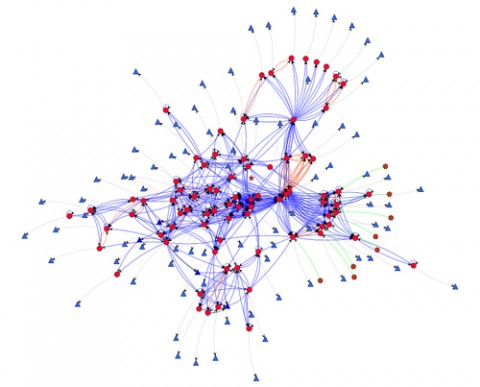
A couple of weeks ago there was an intriguing article in Next City entitled “The Post-Hero Economy: Learning to Lead Through Networks.” In it, Jennifer Bradley and Bruce Katz tell the story of some extraordinary attempts to boost a region in the midwestern United States. The focus is not on a leader or leaders, but on a network. As the authors state, “When telling stories of transformation and turnaround, it is tempting to shape them into personal stories about heroes. One charismatic visionary — a mayor, school superintendent, entrepreneur, outraged citizen — steps up and, with unrelenting vigor and inspirational leadership, starts an irreversible cascade of change. But there is a growing body of research suggesting that, as a system or problem becomes more complex, arriving at a solution requires multiple minds from multiple sectors or perspectives.” Read More
March 20, 2013

|Photo by idleformat|http://www.flickr.com/photos/idleformat/2062534673|
An interesting innovation I’ve seen recently in the realm of network building for social change is the creation of what is being called, in one particular system with which I am working, the “Network Support Team.” In the context of what has emerged to this point as an “alignment network” focused on state-wide food system development and addressing community food insecurity, this volunteer team has stepped forward to help “tend to the whole.” It functions much as a good gardener would in her attempts to nurture abundance and flourishing. As this network considers movement into a more action/production-oriented mode, here is how the NST is helping the garden to grow: Read More













